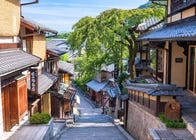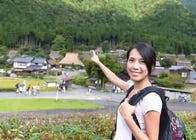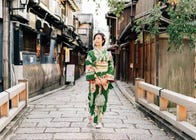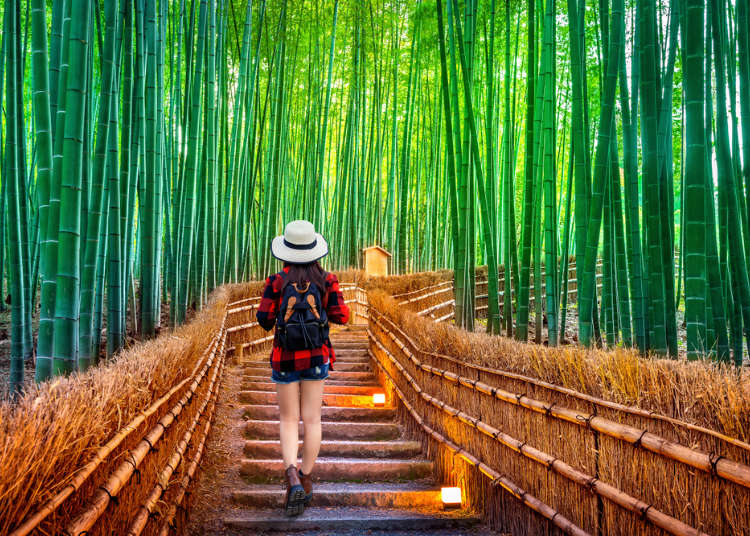
Summer is a favored time to visit Kyoto, Japan's cultural hub. However, the season can be hot and humid, making it important to prepare appropriately for your trip. As Kyoto encompasses a large area, the weather can vary across different regions.
To help you plan your trip, this article features a local writer's advice on the typical temperatures during June, July, and August, as well as tips on what clothing and essential items to bring. It's advisable to check the weather forecast before your departure, as unexpected changes can occur. This way, you can ensure a safe and pleasant visit to Kyoto.
What is Kyoto weather like?
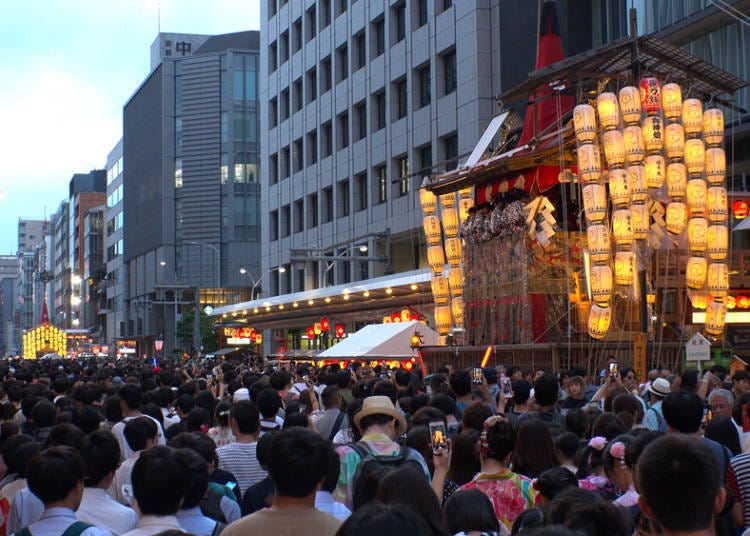
Kyoto Prefecture is oriented north to south, with the Tamba Mountains situated almost in the center. The climate in Kyoto varies depending on the region, with distinct differences between the northern and southern areas.
The northern region, which includes Fukuchiyama, Maizuru, and Miyazu, where Amanohashidate is located, has a Sea of Japan climate. This means it tends to be cloudy throughout the year and has a shorter summer period, with autumn arriving early. Winters are cold, with temperatures dropping below freezing, and the northern tip of the Tango Peninsula experiences significant snowfall. Humidity is high in this area year-round.
Meanwhile, the city of Kyoto, home to famous temples like Kiyomizu-dera and Kinkaku-ji, is located in a basin surrounded by mountains in the southern part of the prefecture.
Summers in this area are hot, while winters are very cold, with a substantial temperature difference between day and night. Additionally, the elevation increases as you approach the mountains, resulting in varying weather and temperature between the urban area in the south and the north.
It's worth noting that there's a well-known saying in Kyoto that "the height of the five-storied pagoda of Toji in the south and the altitude of Kitayama-dori in the north are the same," with only an 8.5 km distance causing a considerable drop in temperature.
What is Kyoto's weather like in June?
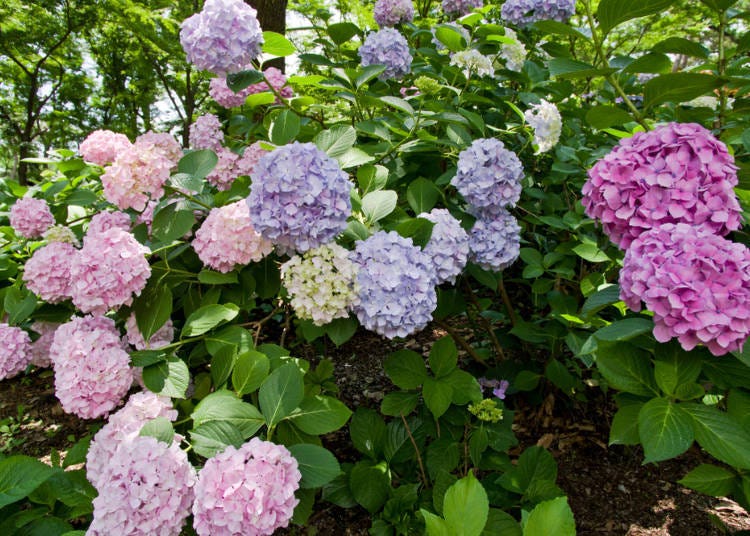
In the southern part of Kyoto, the average temperature in June is 23°C (73.4°F), with an average maximum of 27.8°C (82°F) and an average minimum of 18.8°C (65.8°F). Compared to May, the temperature increases by about 4°C (7.2°F), and rainfall remains high throughout the year, resulting in high humidity and discomfort.
As the month progresses, the number of rainy days increases, so it's advisable for travelers visiting during this period to seek out indoor activities that can be enjoyed even on rainy days. Additionally, it's recommended to come prepared with umbrellas and raincoats to stay dry during your travels.
- Temperature (℃)
- 23.0
- Maximum Temperature (℃)
- 27.8
- Minimum Temperature (℃)
- 18.8
- Precipitation (mm)
- 214
- Humidity (%)
- 67
In the northern region of Kyoto, the average temperature is typically around 2°C (3.6°F) lower than in the southern region. While there are many humid days, it can feel a bit chilly when it rains. The northern area features many mountain and coastal attractions, with few indoor activities available.
On rainy days in Kyoto, it might be an excellent opportunity to relax at an inn and take in the scenic surroundings.
- Temperature (℃)
- 21.0
- Maximum Temperature (℃)
- 25.7
- Minimum Temperature (℃)
- 16.9
- Precipitation (mm)
- 160.9
What clothing is recommended for visiting Kyoto in June?
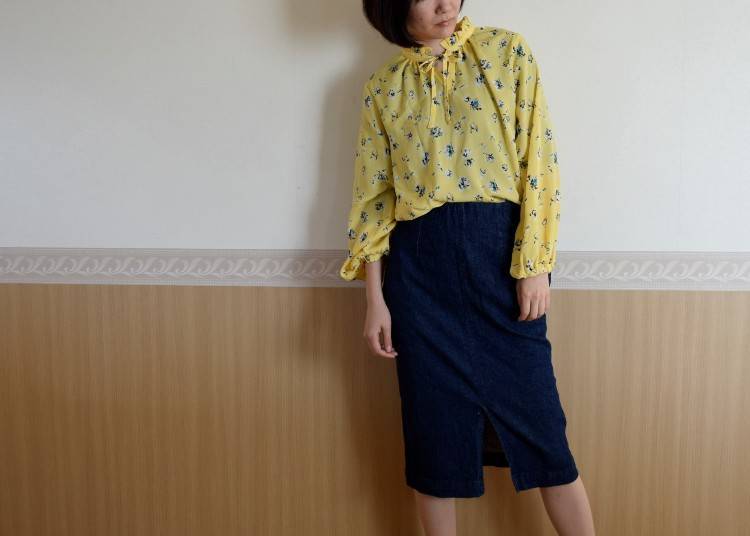
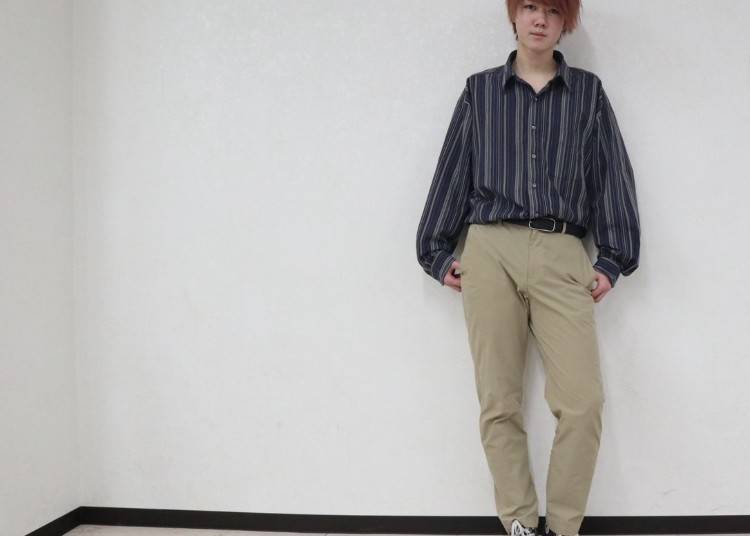
As June marks the start of summer, it's recommended to switch to lighter clothing. However, due to the rainy season, it's advisable to bring waterproof or rain shoes to keep your feet dry. With the increasing use of air conditioning, it's best to have something to keep you warm in such spaces and vehicles.
- Tops (men and women): T-shirts, polo shirts
- Bottoms (men and women): Jeans, skirts (women)
- Shoes (men and women): Sneakers, sandals, rain shoes
- Accessories (men and women): Folding umbrellas
Tips on things to do and see in Kyoto in June
During the rainy season, the hydrangeas in Kyoto bloom and change color as they open, making for a beautiful sight. Many renowned places in Kyoto offer great opportunities to enjoy these flowers for around a month.
For instance, Sanzenin Temple in Sakyo Ward has over 1000 hydrangeas that you can admire. In the northern region of Maizuru City, the Maizuru Natural Cultural Park features an impressive display of about 100,000 hydrangea varieties.
What is Kyoto's weather like in July?
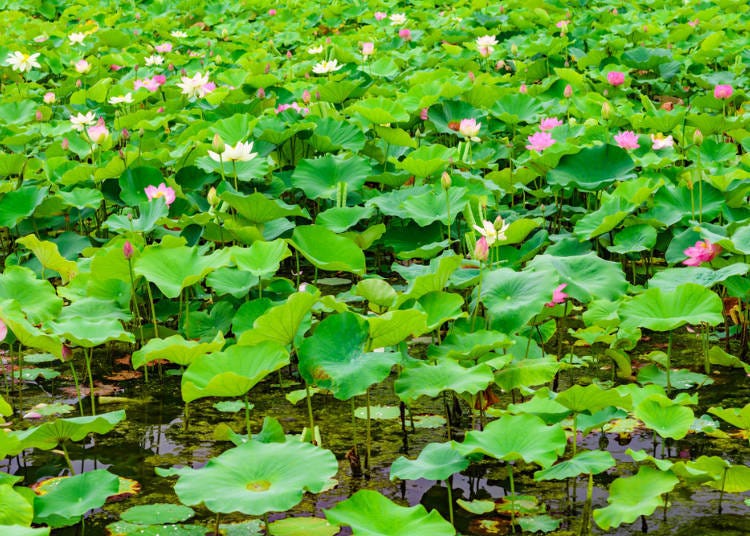
In July, the average temperature in Kyoto is 26.8°C (80.24°F), with an average maximum temperature of 31.5°C (88.7°F) and an average minimum temperature of 23.2°C (73.76°F).
During Japan's rainy season, the humidity can be quite high, and once it ends, the summer season fully begins in Kyoto. It's important to note that the risk of heatstroke increases as the number of days exceeding 30°C (86°F) is high during this time.
Additionally, there is strong sunlight in addition to the humidity, making it crucial to take necessary precautions and protect yourself from the heat.
- Temperature (℃)
- 26.8
- Maximum Temperature (℃)
- 31.5
- Minimum Temperature (℃)
- 23.2
- Precipitation (mm)
- 220.4
- Humidity (%)
- 70
In the northern part of Kyoto, the average temperature in July is 25.1°C (77.18°F), with an average high of 29.8°C (85.64°F) and an average low of 21.5°C (70.7°F). Compared to June, the temperature rises by about 4°C (7.2°F) during this month.
The rainy season typically occurs early in the summer season, and once it ends, Kyoto summer fully sets in. This season is ideal for visiting the beaches along the northern coast of the Sea of Japan.
- Temperature (℃)
- 25.1
- Maximum Temperature (℃)
- 29.8
- Minimum Temperature (℃)
- 21.5
- Precipitation (mm)
- 185.8
What clothing is recommended for visiting Kyoto in July?
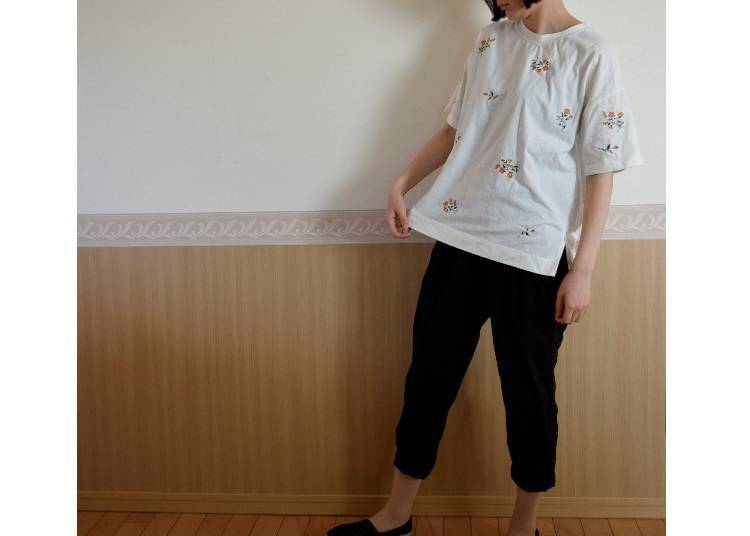
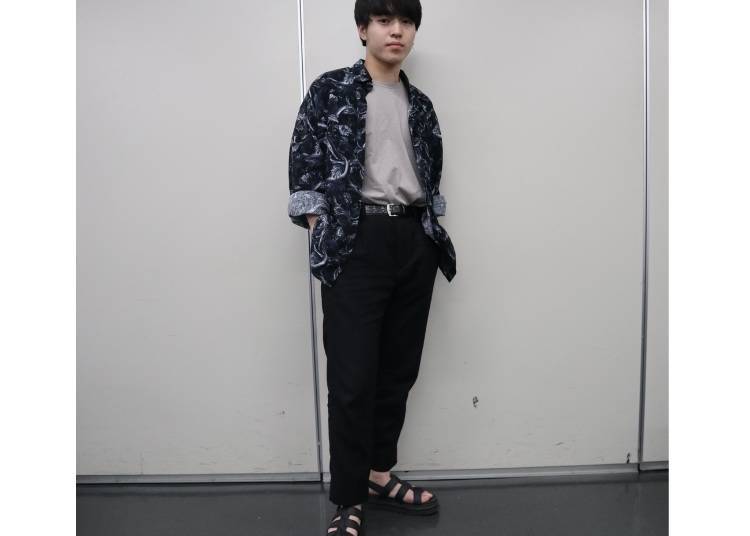
As the temperature rises rapidly in Kyoto after the rainy season, it's recommended to wear short-sleeved or sleeveless tops made from cotton or hemp blends for better ventilation.
It's also advisable to bring a thin hoodie or coat to protect against strong sunlight and for use in indoor air-conditioned spaces. Outdoors, it's recommended to wear sandals, hats, parasols, and sunglasses.
- Tops (men and women): T-shirts, polo shirts
- Bottoms (men and women): Cotton pants, skirts (women)
- Shoes (men and women): Sandals
- Accessories (men and women): Hats, sunglasses, parasols, sunscreen
Suggestions on what to do and see in Kyoto during July
Gion Matsuri is one of Japan's three major festivals and a beloved summer tradition in Kyoto. From July 1st to 31st, various festivities are held around Yasaka Shrine, with the main event being the Yamahoko cruise from the 17th to the 24th. The Yamahoko, a float beautifully adorned with luxurious decorations, parades along the main street to the sound of Gion Bayashi, creating a magnificent spectacle for all to enjoy.
What is Kyoto's weather like in August?

In August, the average temperature in Kyoto is 28.2°C (82.76°F), with an average maximum temperature of 33.3°C (91.94°F) and an average minimum temperature of 24.3°C (75.74°F). During summer in Kyoto, it can be quite uncomfortable due to the high humidity, heat, and strong sunlight in the basin. Additionally, there are often days with temperatures exceeding 35°C (95°F), which can lead to heatstroke. Heatstroke can be dangerous, especially for some people, so it's crucial to take necessary precautions and stay safe.
Air conditioning is essential even at night since the temperature does not drop significantly, and the nights may have a tropical feel.
As this time is also typhoon season, it's advisable to check the weather forecast and typhoon information regularly to avoid any complications while sightseeing.
- Temperature (℃)
- 28.2
- Maximum Temperature (℃)
- 33.3
- Minimum Temperature (℃)
- 24.3
- Precipitation (mm)
- 132.1
- Humidity (%)
- 66
In the northern part of Kyoto during August, the days with temperatures over 30℃ (86°F) continue. The average temperature in this region is 26.5℃ (79.7°F), with an average maximum temperature of 31.7℃ (89.06°F) and an average minimum temperature of 22.6℃ (72.68°F). It's essential to take measures to protect yourself from the heat, especially during intense heat days exceeding 35°C (95°F).
While there are many sunny days to enjoy leisure activities in the mountains and by the sea, be mindful of lightning-filled sunsets.
- Temperature (℃)
- 26.5
- Maximum Temperature (℃)
- 31.7
- Minimum Temperature (℃)
- 22.6
- Precipitation (mm)
- 130.3
What clothing is recommended for visiting Kyoto in August?
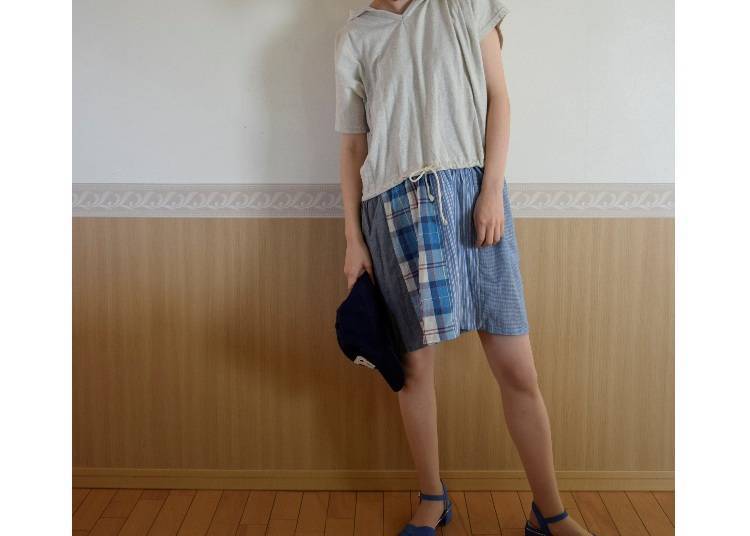
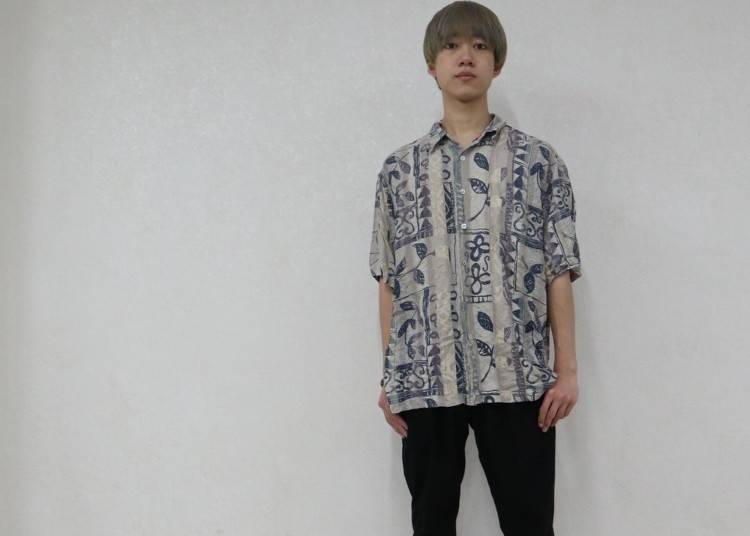
As with July, it's recommended to wear short-sleeved or sleeveless shirts, and women can opt for loose dresses. Sandals are a suitable choice for footwear, but if you don't have a parasol for walking outdoors, consider bringing a thin hoodie or jacket to protect your skin from the sun. It's also a good idea to have one with you for indoor spaces that can be very cool.
- Tops (men and women): T-shirts, dresses (women)
- Bottoms (men and women): Cotton pants, skirts (women)
- Shoes (men and women): Sandals
- Accessories (men and women): Hats, sunglasses, parasols, sunscreen
Best things to see and do in Kyoto in August
Every year, Kyoto's traditional event, "Kyoto Gozan Sendai," is held on August 16th, wherein bonfires are ignited sequentially from 8 pm. The event is meant to send off the spirits that returned during the Bon Festival.
Kyoto Gozan Sendai is an annual event held in Kyoto, Japan, on August 16th. It is a traditional festival where five large bonfires are lit in different parts of the city. The five bonfires are called "Gozan no Okuribi" and are lit in the shape of Chinese characters or symbols.
- Daimonji (large bonfire): This is the most famous and largest bonfire, which is lit on the side of a mountain in the shape of the Chinese character "dai," which means "large." It measures about 80 meters (262 feet) in length and is visible from various parts of the city.
- Myo-ho (wondrous law): This bonfire is lit on another mountain in the shape of the Chinese character "myo," which means "wondrous." It is about 50 meters (164 feet) in length and is meant to represent the Buddhist teachings.
- Hidari-Daimonji (left capital letter): This bonfire is lit on a hillside in the shape of the Japanese character "hidari," which means "left." It is about 35 meters (115 feet) in length and is the smallest of the five bonfires.
- Torii (shrine gate): This bonfire is lit on a mountain in the shape of a torii gate, which is a traditional Japanese gate often found at the entrance of Shinto shrines. It is about 30 meters (98 feet) in length.
- Funagata (boat-shaped): This bonfire is lit on the banks of the Kamo River in the shape of a boat. It is about 25 meters (82 feet) in length and is the only bonfire that is not on a mountain.
Kyoto, surrounded by mountains, tends to have little breeze, resulting in intense summer heat. This is further exacerbated by the heat island phenomenon in the city center. However, the city has numerous shrines with ample shade and many sightseeing spots. Souvenir shops and restaurants are air-conditioned, and transportation also provides air conditioning. In the northern sightseeing spots, there are mountains and seas to explore while being cautious about the heat.
Reference: Ministry of Land, Infrastructure, Transport and Tourism Meteorological Agency website
- Area
- Category
*Prices and options mentioned are subject to change.
*Unless stated otherwise, all prices include tax.
Popular Tours & Activitiess
Recommended places for you
-
Goods

Yoshida Gennojo-Roho Kyoto Buddhist Altars
Gift Shops
Nijo Castle, Kyoto Imperial Palace
-

Kanzenkoshitsuyakinikutabehodai Gyugyu Paradise Sannomiya
Yakiniku
Kobe, Sannomiya, Kitano
-

Jukuseiniku-to Namamottsuarera Nikubaru Italian Nikutaria Sannomiya
Izakaya
Kobe, Sannomiya, Kitano
-

Kambei Sannomiyahonten
Yakiniku
Kobe, Sannomiya, Kitano
-

ISHIDAYA Hanare
Yakiniku
Kobe, Sannomiya, Kitano
-

Tenryu-ji Temple
Temples
Arashiyama, Uzumasa
-
Ad

Experiencing Manga as Culture, Not Just Reading It: Expo 2025 with Rumiko Takahashi
-

Everything You Need to Know About teamLab Biovortex Kyoto (2025 Insider Guide)
by: Wemmy Chau
-

New Way to Reach Koyasan! Ride Nankai's 'GRAN Tenku' for a Heavenly Journey
by: Guest Contributor
-
Ad

Café Bahnhof in Osaka: The home-roasted coffee that captivated G20 leaders!
-

Best Things to Do and See Around Kyoto & Osaka in September: Events and Festivals in Kansai
-
Ad

Recharge and Relax with a Healing Getaway at Kamenoi Hotel Toba
Inspiration for Accommodations
-

Spacious Family Hotel in Namba: 20 Comfortable Stays for Family Fun
-

Charming Hotels to Enjoy the Spectacular Views of Arashiyama's Autumn Leaves from Your Room
-

Experience Stunning Views of Osaka Castle from Private Spaces: Top Hotels Near Osaka Castle
-

Recommended by Visitors! Arashiyama's Best-Rated Hotels
-

Family-Friendly Universal Studios Japan Hotel with Excellent Access
-

Enjoy a Comfortable Stay in Osaka! 10 Hotels with Convenient Airport Shuttle Services
-

Top 10 Recommended Hotels Near Namba Station with Great Access
-

Enjoy Night Views from Your Room! Recommended Hotels in Namba Area
-

Fun Things to Do in Osaka & Kyoto in July: Enjoy Summer with Festivals, Fireworks & More
by: Guest Contributor
-

Universal Studios Japan: Guide to Osaka's Giant Theme Park Attractions!
by: WESTPLAN
-

Gion Matsuri Guide (July 2025): Access and Tips on Enjoying One of Japan's Three Great Festivals in Kyoto
-

Osaka Tenjin Matsuri - The Top Japanese Festival That's a Spectacle of Fire and Water (July 24-25, 2024)
-

Autumn in Japan 2025: Fall Foliage Forecast & Where to Enjoy the Colorful Leaves (+Tour Info)
-

Enjoy Osaka and Kyoto in June 2024 - Guide to Festivals and Things to Do
- #best gourmet Osaka
- #things to do Osaka
- #what to do in kyoto
- #what to bring to japan
- #best gourmet Kyoto
- #new years in Osaka
- #what to buy in nanba
- #Visiting Osaka
- #onsen tattoo friendly arima
- #daiso
- #Visiting Kyoto
- #best japanese soft drinks
- #japanese fashion culture
- #japanese convenience store snacks
- #japanese nail trends
















